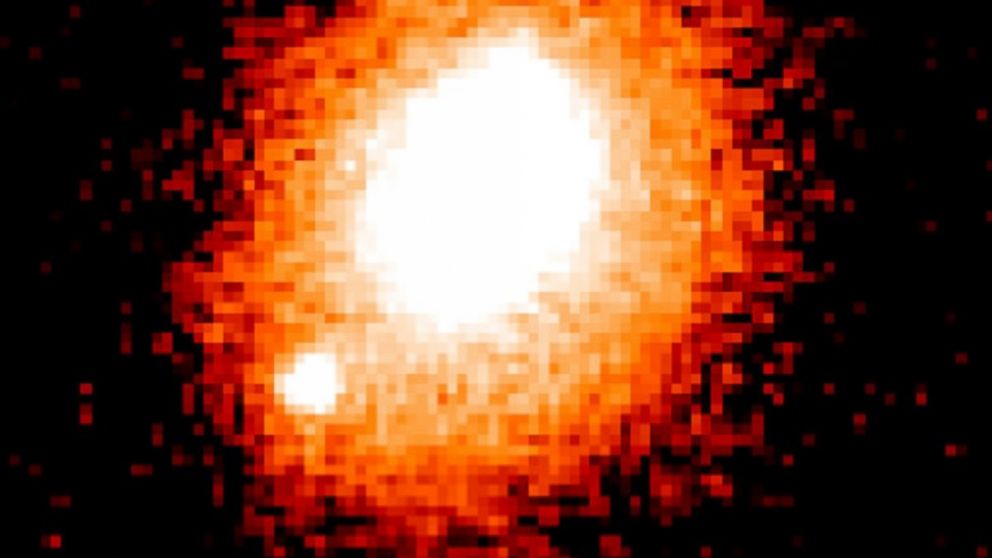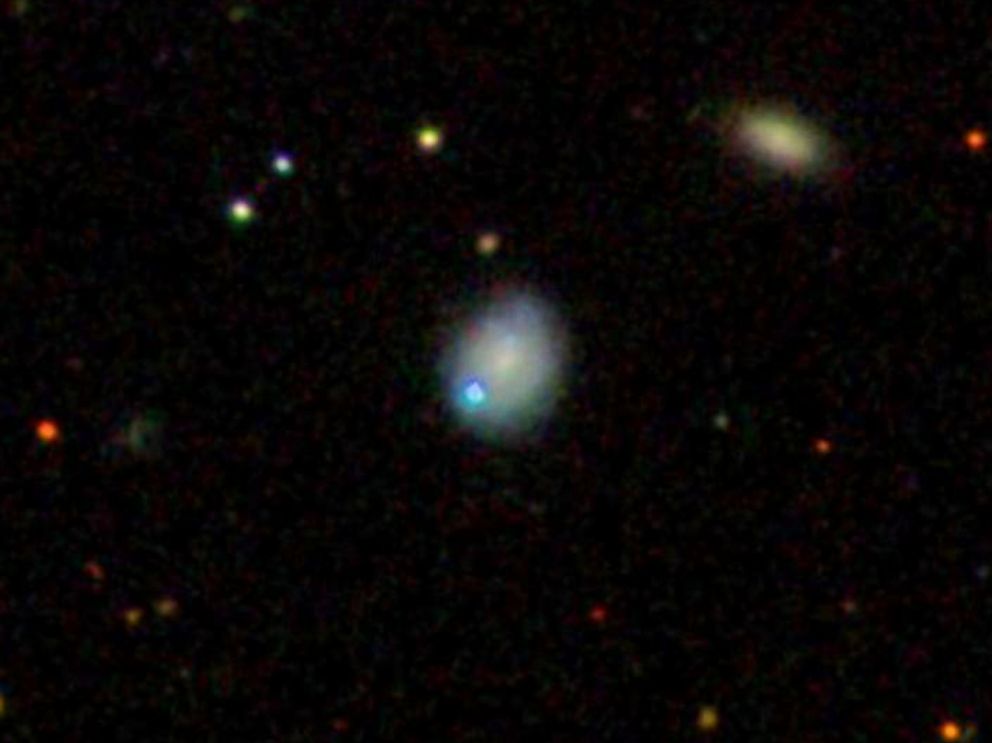Astronomers Probe Unusual Source of Light in a Galaxy Far, Far Away
Unusual light is in a galaxy 90 million light years away, NASA says.

— -- In a galaxy far, far away, a mysterious light source is intriguing an international team of astronomers.
Known as SDSS1133, the cosmic light appears as a bright spot on astronomical surveys, where it has been captured without explanation for six decades.
After analyzing the light source, which is estimated to be more than 90 million light years away, astronomers said they've narrowed it down to two likely possibilities.
It could be a supermassive black hole that merged with another and was kicked out of its native galaxy or a remnant of a supernova explosion.
"With the data we have in hand, we can't yet distinguish between these two scenarios," said Michael Koss, an astronomer and lead researcher with the Swiss Federal Institute of Technology, according to NASA.
Koss added that the brightness of the light "has changed little in optical or ultraviolet light for a decade, which is not something typically seen in a young supernova remnant."

The enigmatic light source is located in the dwarf galaxy Markarian 177 and is located inside the bowl of the Big Dipper. Supermassive black holes are usually found at the center of a galaxy, however, this light source is 2,600 light years from the core, according to NASA.
A paper by Koss and his team is being published in the Monthly Notices of the Royal Astronomical Society on Friday, according to NASA.
Whatever the light source is -- astronomers are closer than ever to solving another one of the mysteries of space.




